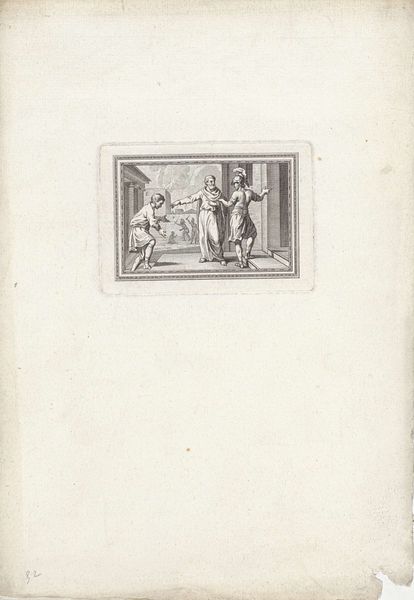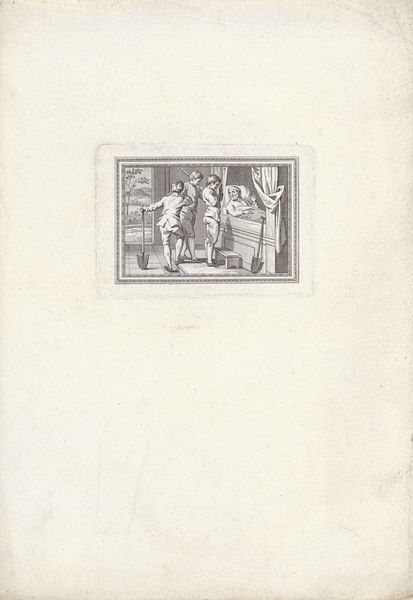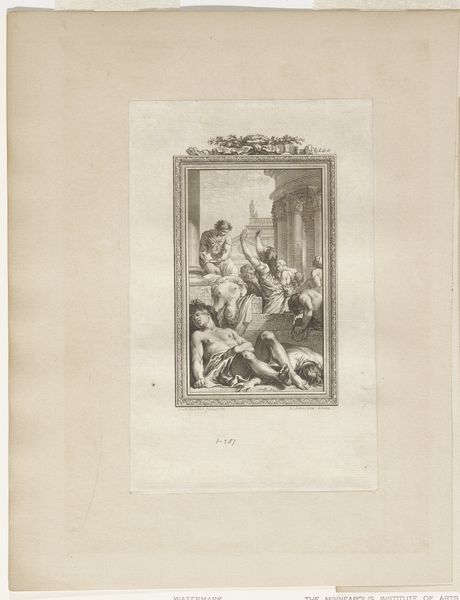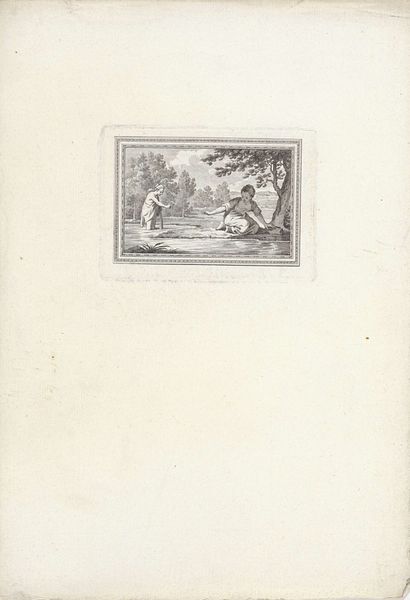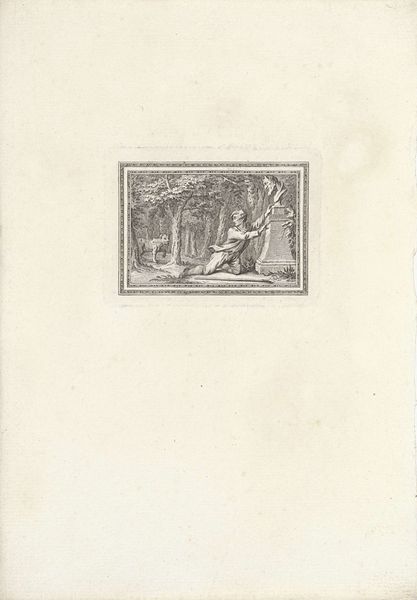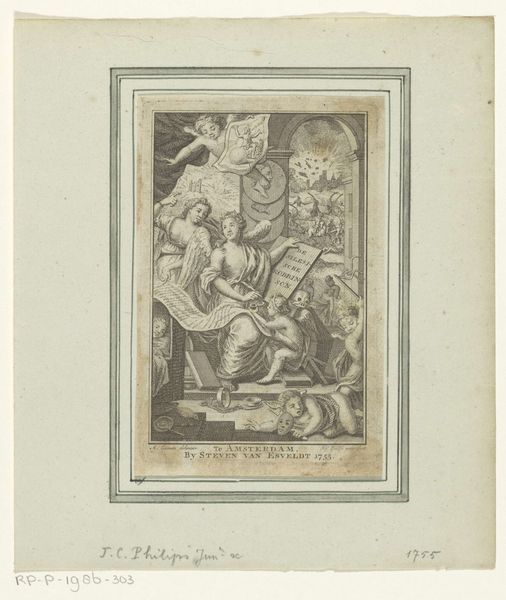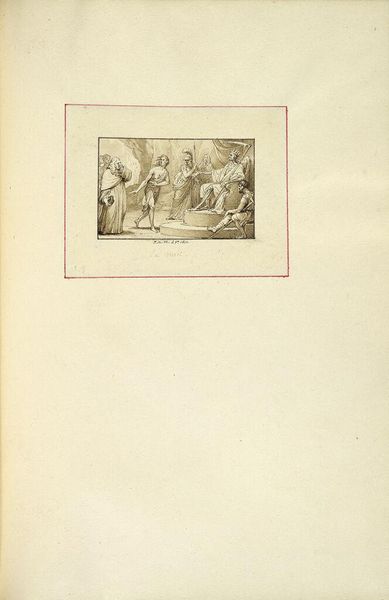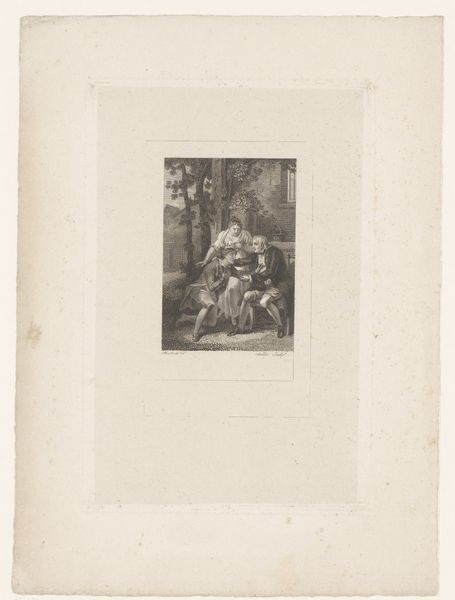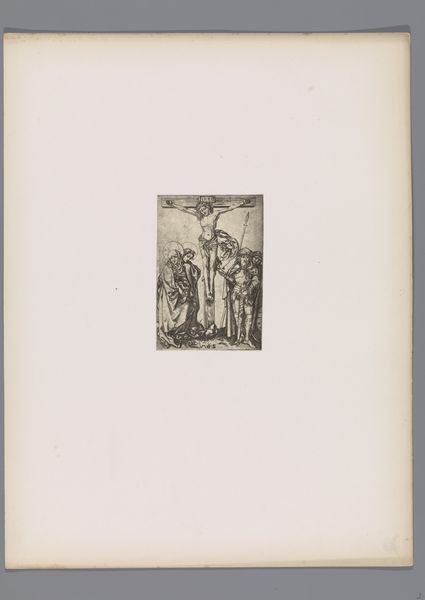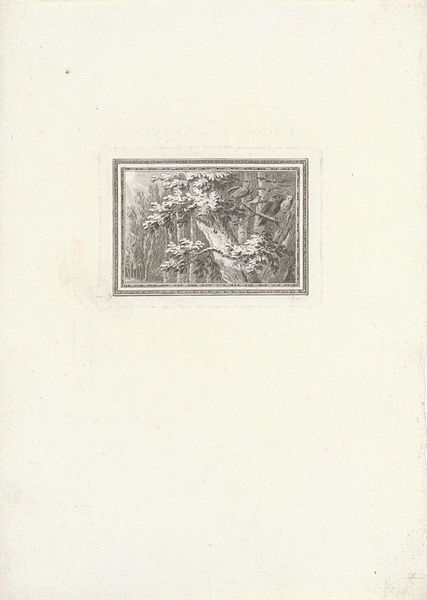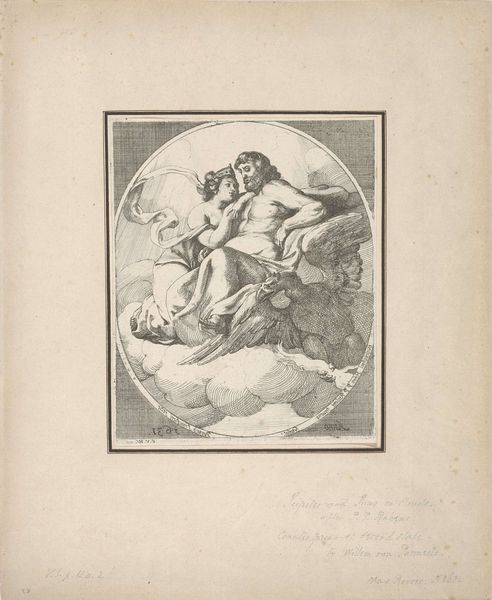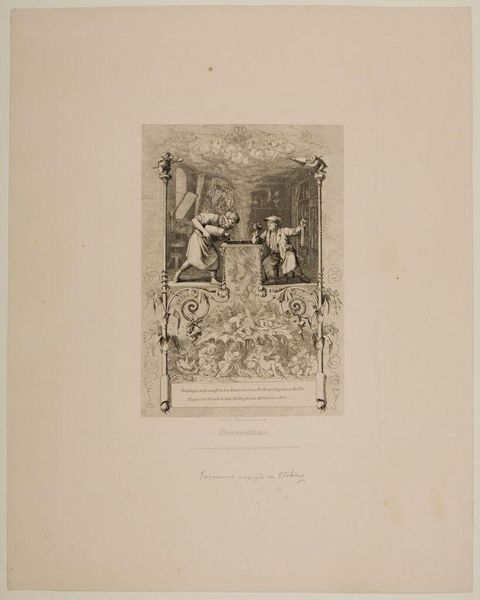
print, engraving
#
neoclacissism
#
allegory
# print
#
old engraving style
#
history-painting
#
engraving
Dimensions: height 67 mm, width 91 mm
Copyright: Rijks Museum: Open Domain
Editor: Here we have Reinier Vinkeles’ 1792 engraving, “Friendship Complaining to Jupiter.” The crisp lines create a very formal, almost detached mood. What stands out to me is how meticulously the composition adheres to this balanced, almost symmetrical design. What do you see in this piece? Curator: Indeed, the composition presents a calculated formality, reflective of its Neoclassical context. Notice the clear delineation of forms and the controlled gradation of light and shadow. The visual language emphasizes structure and order above all else. Note also the framing device within the print itself: a border incised with regular patterning, further enhancing the effect. The cloud formations too, almost decorative in their rendering, play into this tension. What do you make of that interplay between the natural and the artificial? Editor: It is intriguing how even the clouds have a structured appearance. Does that contribute to the work's allegory, conveying how even higher powers adhere to certain rigid principles? Curator: Precisely. Consider the unwavering commitment to idealized forms; note Friendship's flowing yet statuesque robe in contrast to the sharp cut of Jupiter's drape. Such choices underline the very *idea* of an "ideal," striving beyond the immediate world. The lines perform a delicate balance. What purpose do you think the relatively shallow depth of field and flattened plane serve within this composition? Editor: Perhaps to reduce the narrative and enhance focus on these allegorical figures and their relationship. By limiting the depth, we are confronted directly with the core subject. I've gained a whole new appreciation for the visual architecture here! Curator: A keen observation. Reflecting on Vinkeles' strategic deployment of formal elements reveals much about how the artwork communicates through visual order and balance rather than solely through narrative content. Editor: Thank you; viewing art through a formalist lens definitely adds layers to understanding an artwork.
Comments
No comments
Be the first to comment and join the conversation on the ultimate creative platform.

